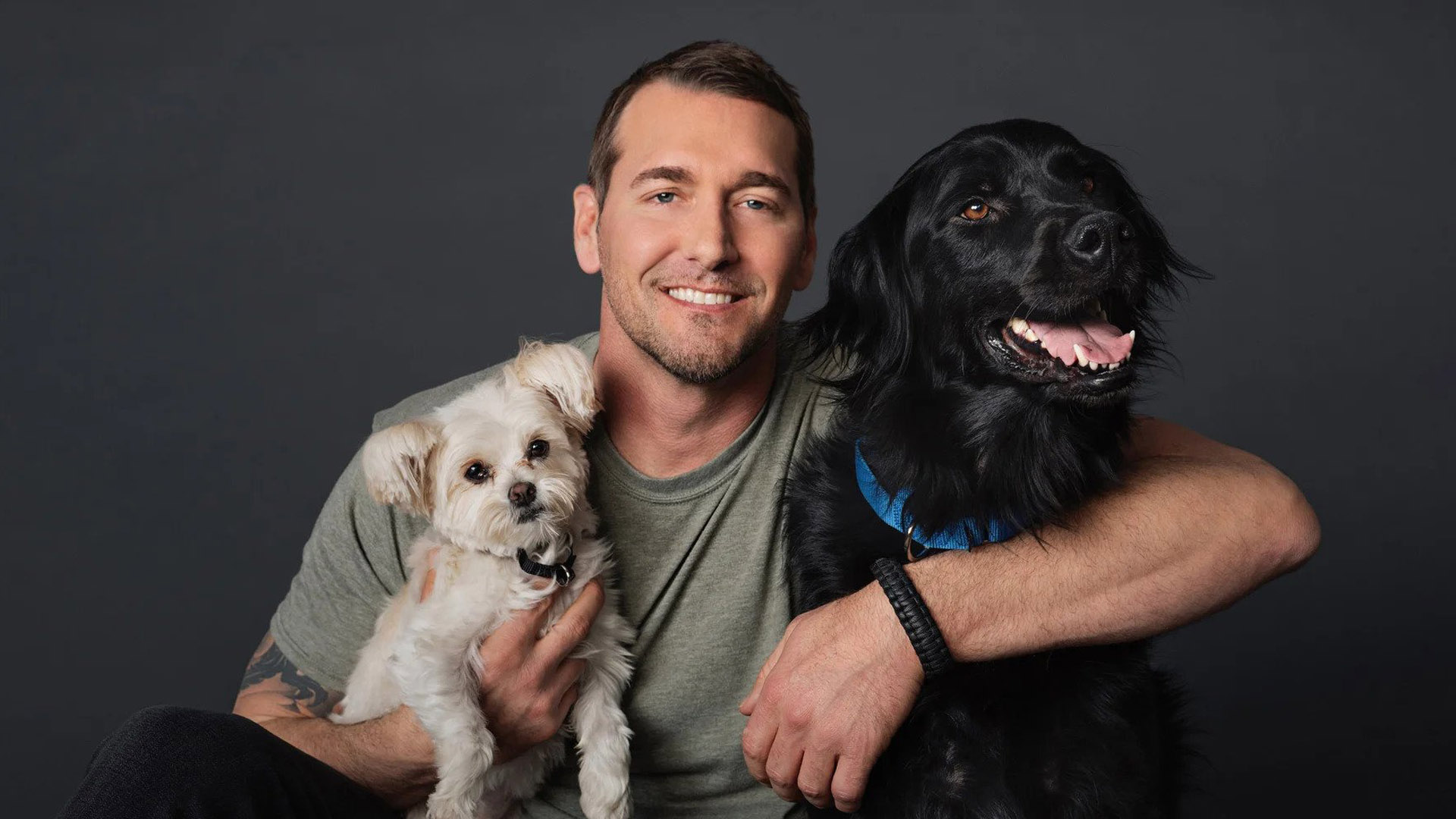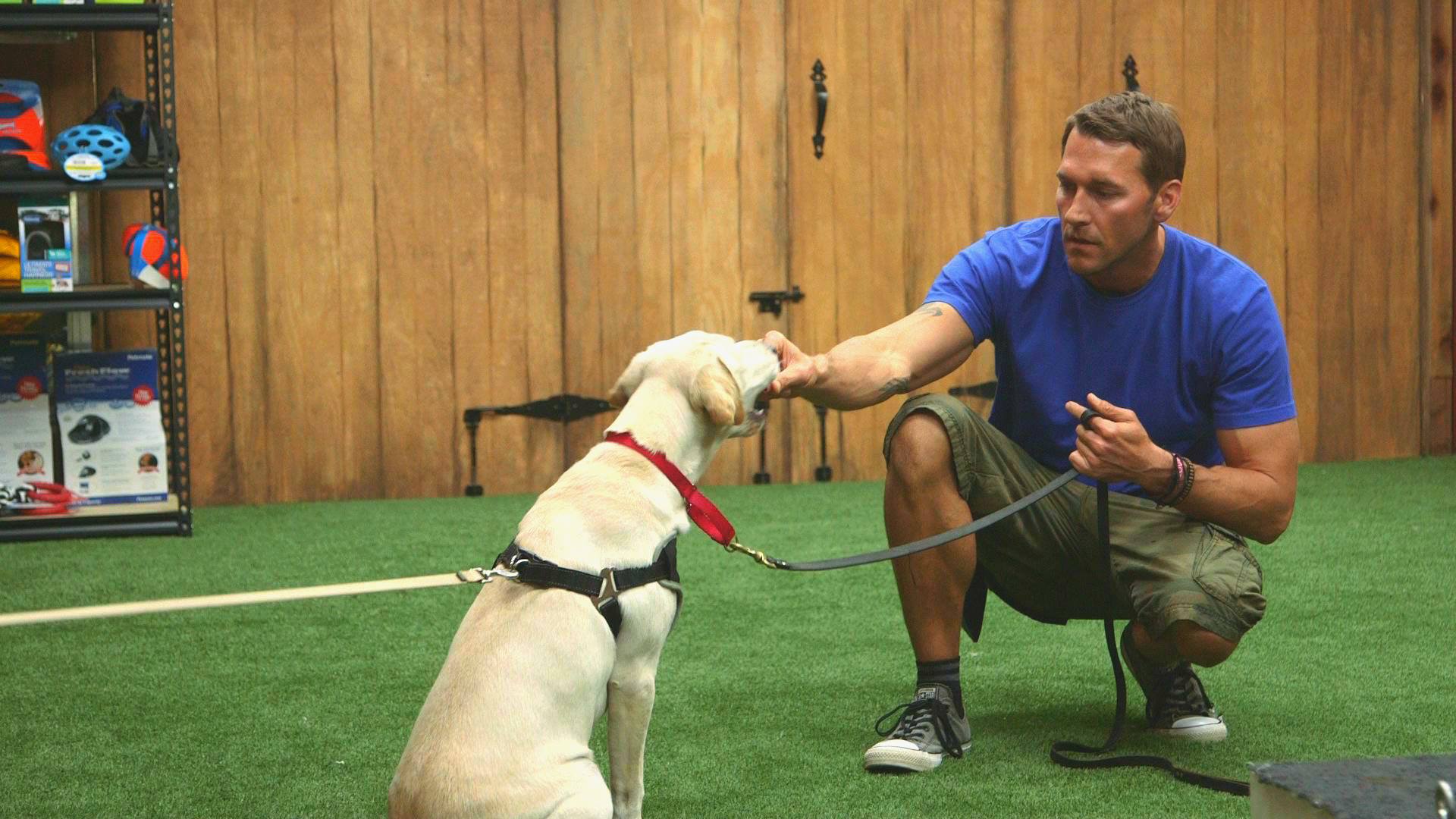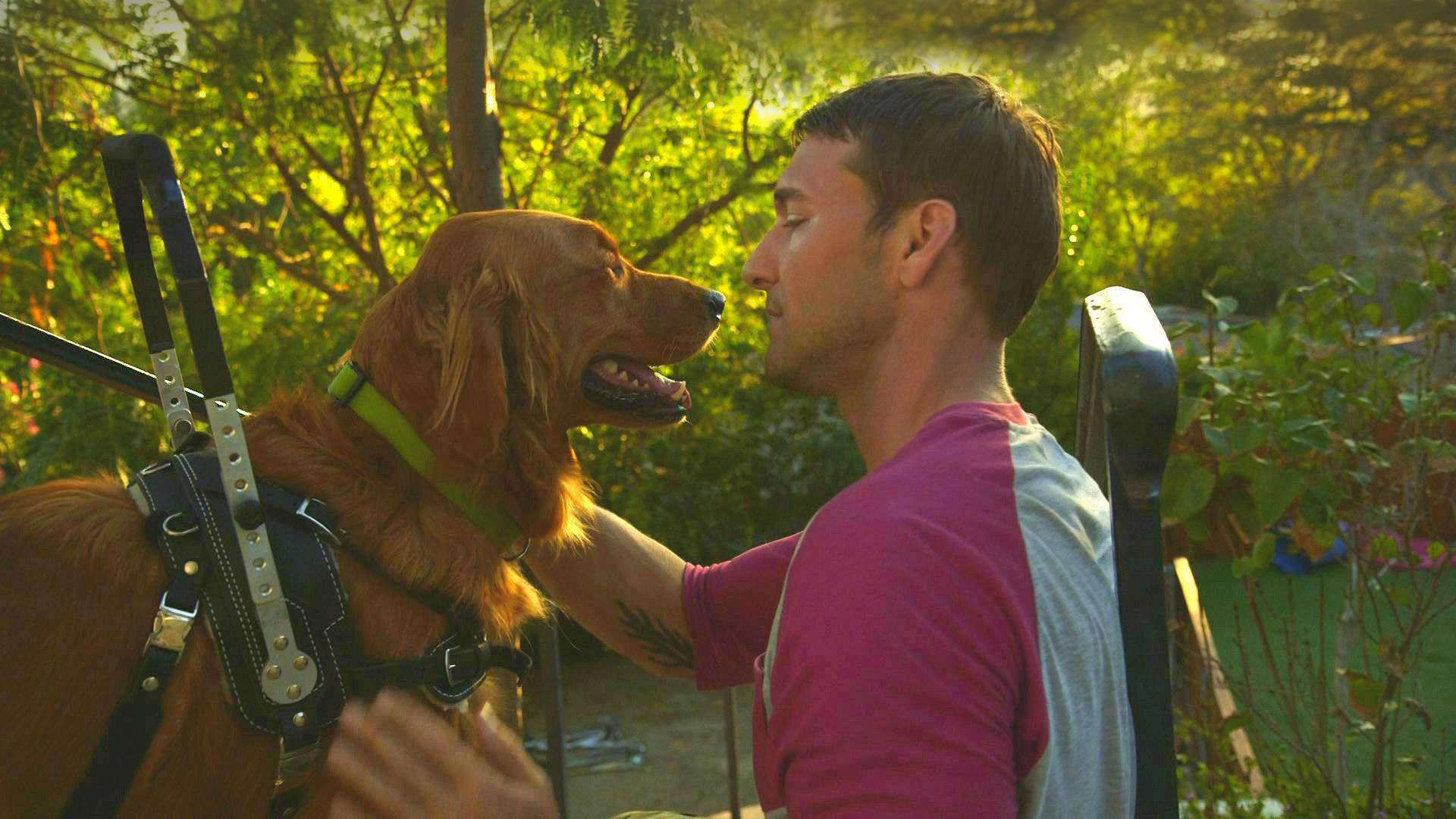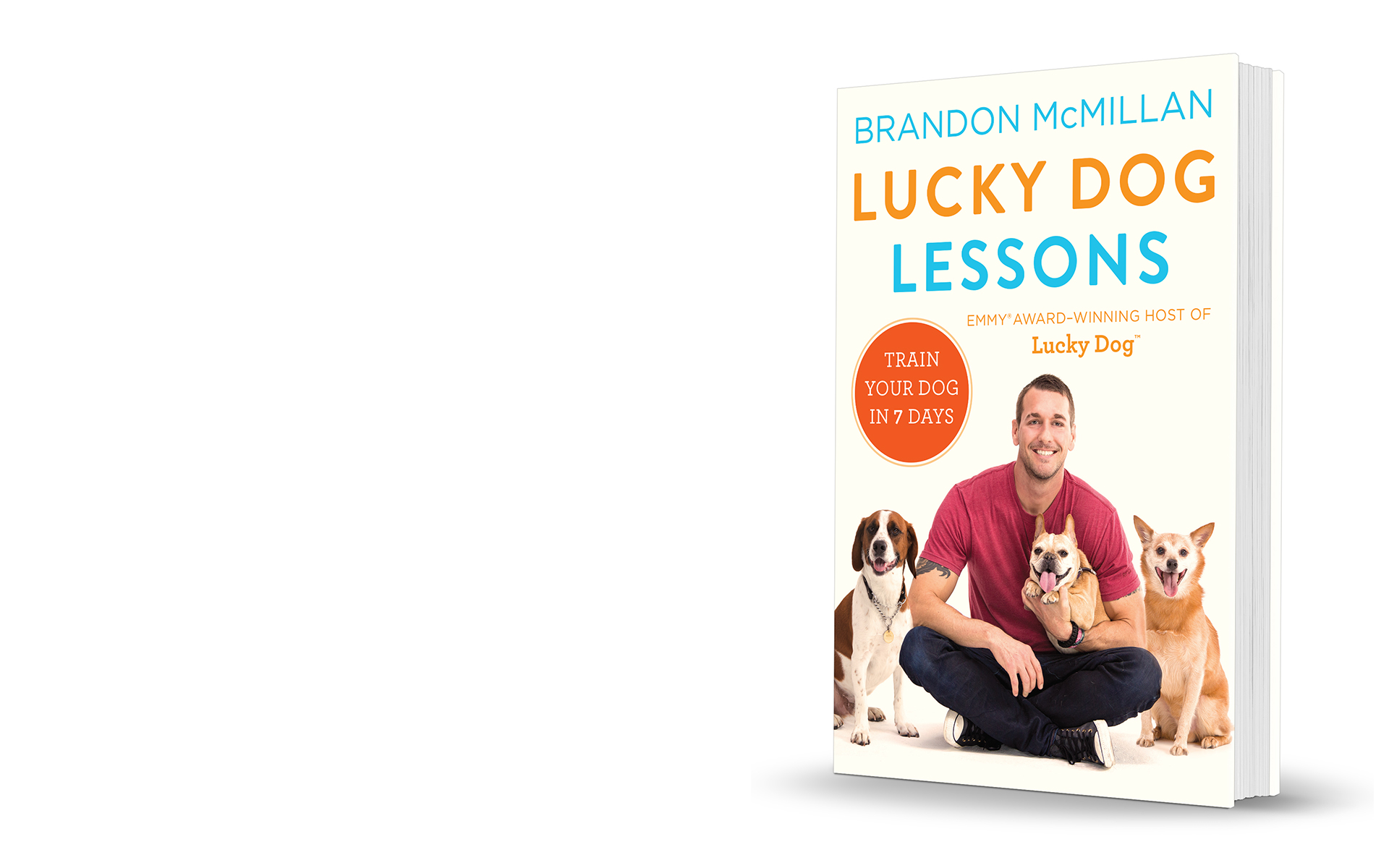I TRUST LUCY PET FOODS FOR THE HEALTH OF EVERY DOG I RESCUE AND TRAIN.




Brandon McMillan, shares his training system to transform any dog—from spoiled purebred puppy to shelter-shocked rescue—into a model companion in just seven days.
Potty training is often the most stressful part of bringing a new pet into our homes. Luckily, Dog Trainer Brandon McMillan has all the tips for quickly bringing your new pup up to speed in the bathroom etiquette department.
For many of us, the hardest part about adopting and bringing home a new dog is potty training. It’s a process that can test your patience, and cleaning up accidents is never fun. However, proper bathroom behavior is essential for your pet to learn, whether you are bringing home a new puppy or adopting an older rescue dog.
In this episode of “Lucky Dog,” Brandon rescues Dottie from the shelter, a sweet senior dog who is preparing to live out her golden years as a beloved pet and an office dog. As Dottie has only ever lived as a stray on the streets, she has not been potty trained. Watch as Brandon potty trains Dottie in less than a week to prepare her to go to her forever home.
Lucky Dog is on Sundays starting at 9:00AM Eastern | 8:00AM Central!
Watch for FREE on Dabl – click here to find out where to watch! You can always check our schedule here.
Brandon’s training methodology comes from the knowledge that dogs don’t like to go to the bathroom where they eat or sleep. With this in mind, Brandon employs what he calls the “house training triangle,” where he rotates Dottie between time in a play pen, time outside to use the bathroom, and free time in the house after she’s done her business correctly. When she does go outside, Brandon makes sure to reward Dottie immediately so she knows she is being a good girl.
Initially, Dottie has to spend much more time in the pen than she does outside or loose in the house. While it may be hard to see your dog spend so much time in the pen, it’s only temporary. Brandon explains that the rotation starts with 1.5 hours in the pen, and 30 minutes of free time at the beginning of the training. However, as Brandon says, “the secret to the technique is to decrease pen time and increase free time in the house. Eventually, by the end of the week, the pen is eliminated altogether.” If you are consistent with potty training your dog and following Brandon’s schedule, your new pup may be bathroom trained as quickly as Dottie was!
If you are currently in the process of potty training, don’t give up hope! While the training may seem tedious, your patience and perseverance will pay off in the end. If you are struggling with potty training, here are some other tips to consider!
One type of potty training that is very similar to the method Brandon used on Dottie is crate training. This is where you rotate your dog’s time in the crate with time outside and time in the house. Many people use crate training to prevent accidents overnight since dogs do not like to go to the bathroom where they sleep. If dogs are crate trained correctly, their crate can become their den, or a safe place where they go to relax whether they are required to be inside or not.
However, the key to crate training is to make sure the crate is the right size for your dog. If the crate is too big, your dog could end up using one end as a bathroom and sleeping on the other end. If the crate is too small, your dog may be very uncomfortable. Generally, you want your crate to have just enough room for your dog to stand up and turn around.
Consider the age of your dog.
While potty training, it is important to consider the age of your dog. If you have a puppy, they cannot physically hold their bladder as long as a mature, adult dog. According to the American Kennel Club, a puppy can’t control his bladder at all until he is at least 16 weeks old. However, the general rule of thumb is that dogs can hold their bladder 1 hour for every month of life. So, if your puppy is 3 months old, they will probably need a bathroom break every 3 hours. In addition, senior dogs may also need more bathroom breaks, as some dogs will lose some of their bladder and bowel control as they age.
While the norm is to train dogs to use the bathroom outside in a backyard, there are many reasons to teach your dog to go on a pad indoors instead. For example, you may not have a backyard or easy access to outdoor space, or the only outdoor space you have access to is a public space that you need to avoid because your puppy isn’t fully vaccinated. Maybe the frequent bathroom breaks are too much for your schedule, or you have a disability that makes it hard to spend so much time outside with your dog. Whatever your reason, pad training is a useful tool for potty training.
The first step is to pick a floor that can easily be wiped clean, such as tile or laminate in bathrooms or your kitchen. Lay down the puppy pads, and bring your puppy or dog to them frequently until they go. Praise your dog profusely for good behavior. Once a pad is soiled, simply throw it away and replace it with a fresh pad. If your pet goes on the floor instead of the pad, gently correct them by placing them on the pad and encouraging your furry friend to go there. If you do want your dog to eventually only do his business outside, try picking a location by a door so that your dog learns to associate going to the door with asking to go to the bathroom.

These Glad training pads are made with five layers of Glad-level strength for leak-proof protection and odor neutralization, which will help you potty train your pet without making your home smell like a bathroom. When your dog does decide to go, the pads instantly absorb urine and turn it into gel for a mess-free cleanup. In addition, special pheromones are infused into the pads that are meant to attract your dog to the pad and encourage them to go potty.
If your dog is having frequent accidents, there is a good chance they are simply not getting enough time outside where they are allowed to go. If you’re not having much luck with potty training, try providing more opportunities for your dog to go outside until they start to get the hang of it. If you are already providing a lot of quick bathroom breaks, try to spend a bit more time outside while your pup figures everything out.
Alternatively, if your dog is confused about where he is allowed to go, eventually he wont be able to hold it any longer and nature will take its course. When that moment comes, you will be much better off if you are already at your dog’s designated bathroom spot. Make sure to reward your dog so he learns going to the bathroom in this spot is good behavior.
If your dog really isn’t understanding that they are supposed to go to the bathroom in a specific spot, you can also introduce a scent rag into your dog’s bathroom breaks. The next time your dog goes to the bathroom, whether it is in the right spot or not, soak up some of his urine into an old rag or paper towel. This puts your dog’s specific scent on the rag, which you can then place in your dog’s designated bathroom area. When your dog smells his own scent, he will be encouraged to use the bathroom again where the rag is located.

If your dog needs some extra help figuring out where to go, give him some guidance with Nature’s Miracle Housebreaking Spray. The spray works by releasing pheromones that attract your dog, and encourage him to go potty in the desired place. This spray is effective for both indoor and outdoor potty training!